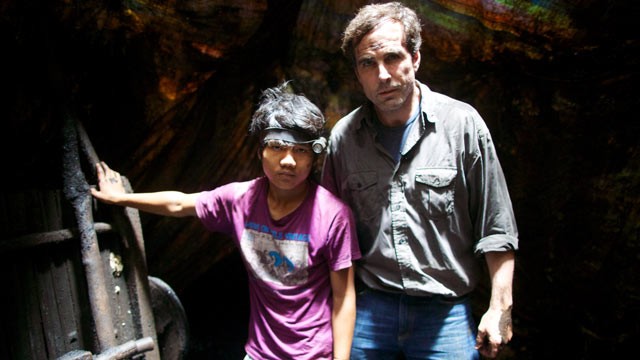
ABC's Bob Woodruff poses with 17-year-old Pemba Tamang, a coal miner in the Indian state of Meghalaya. (Jake Whitman/ABC)
By BOB WOODRUFF (@bobwoodruff) and JAKE WHITMAN
KHLIEHRIAT, India June 17, 2013
Deep in the mountains of Northeast India, the workday begins with a
treacherous, five-story climb down slippery bamboo ladders, with no
safety gear and no emergency exits.
The...













